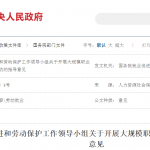世卫组织和合作伙伴呼吁对护士队伍进行紧急投资
Covid-19大流行突出表明迫切需要加强全球卫生人力。一份题为《2020年世界护理状况》的新报告对卫生人力的最大组成部分进行了深入研究。所得结果确定了护理人员队伍中的重要差距,以及投资发展护理教育、就业和领导力方面的优先领域,目的是加强世界各地的护理工作,改善所有人的健康。
护士占世界卫生工作者的一半以上,在卫生系统各个环节提供重要服务。不论是过去还是现在,护士历来都战斗在对抗威胁全球健康的流行病和大流行病的最前沿。他们现正在世界各地应对COVID-19大流行,他们表现出了同情心、勇敢和勇气:他们的价值从未得到如此清晰地展现。
世卫组织总干事谭德塞博士说:“护士是所有卫生系统的支柱。目前,许多护士身处对抗Covid-19的第一线。这份报告鲜明地提醒大家他们所发挥的独特作用,并敲响了警钟,以确保他们获得维护世界健康所必需的支持。”
该报告由世界卫生组织(世卫组织)与国际护士理事会和“护理服务刻不容缓”运动合作编写,其中揭示,目前全球护士人数不到2800万。2013年至2018年期间,护理人数增加了470万。但全球仍短缺590万护理人员,世卫组织非洲、东南亚和东地中海区域国家以及拉丁美洲部分地区缺口最大。
显而易见的是,世界80%以上的护士在拥有世界一半人口的国家工作。每八名护士中就有一名不在其出生或接受培训的国家执业。老龄化也威胁着护理人员队伍:预计世界六分之一的护士将在未来十年退休。
为了避免全球短缺,该报告估计,遭遇短缺问题的国家需要以每年平均8%的比率增加护士毕业生总人数,同时提高其在卫生系统中的就业和留任能力。这笔费用(按人口)大约为每年人均10美元。
国际护士理事会主席Annette Kennedy说:“政治家们明白教育和维持一支专业护理人员队伍所需的成本,但直到现在,他们当中许多人才承认护理人员的真正价值。在护理领域投入的每一分钱都可显而易见地切实提高个人和家庭的福祉。这份报告强调了护理服务的贡献,并证实了对护理职业的投资可给社会带来效益,而不是成本。世界需要增加数百万名护士,我们呼吁各国政府采取正确的行动,投资发展这一伟大职业,使其人民从只有护士才能做的令人惊叹的工作中受益。”
大约90%的护士是女性,但很少有护士担任高级卫生领导职务——这些职务大部分由男性担任。但是,如果国家支持护士发挥领导作用,例如设立政府首席护理官(或同等职务)和开展护理领导能力规划,护士的状况就会得到改善。
“护理服务刻不容缓”运动联合主席Nigel Crisp勋爵说:“这份报告汇总了急需的数据和证据,以支持我们呼吁加强护理人员的领导力,推进护理实践,并教育未来的护理人员。各项政策方案反映了我们认为所有国家在未来十年都可采取的行动,以确保所有国家都有足够的护士,同时确保护士能充分利用其教育、培训和专业知识来加强初级卫生保健服务,并应对COVID-19等突发卫生事件。这必须从广泛的跨部门对话开始,结合一个国家的卫生系统、卫生人力和卫生优先事项来考虑护理方面的证据。”
为了使世界具备所需的护理人员,世卫组织及其合作伙伴建议所有国家:
- 增加资金以教育和雇用更多的护士;
- 加强收集、分析和处理卫生人力数据的能力;
- 监测护士的流动和移徙,并以负责任和合乎道德的方式进行管理;
- 在必需的科学、技术和社会技能方面教育和培训护士,以推动初级卫生保健领域的进展;
- 设立领导职位,包括政府首席护士,并支持发展年轻护士的领导能力;
- 确保初级卫生保健团队中的护士能充分发挥其潜力,例如在预防和管理非传染性疾病方面;
- 改善工作条件,包括使人员配备水平得当、保证公平工资和尊重职业健康和安全权利等;
- 实施对性别问题有敏感认识的护理人员政策;
- 通过统一教育和从业标准以及使用能够在全球认可和处理护士证书的系统,实现专业护理监管的现代化;
- 加强护士在医护团队中的作用,将不同部门(包括卫生、教育、移民、财政和劳动部门)与护理领域的利益攸关方聚集在一起,进行政策对话和制定人力计划。
该报告传达的信息很明确:政府需要投资大规模加速对护理教育的认证,创造护理工作岗位并提高护理人员的领导力。没有护士、助产士和其他卫生工作者,国家就无法赢得抗击疫情的战斗,也无法实现全民健康覆盖和可持续发展目标。
The Covid-19 pandemic underscores the urgent need to strengthen the global health workforce. A new report, The State of the World’s Nursing 2020, provides an in-depth look at the largest component of the health workforce. Findings identify important gaps in the nursing workforce and priority areas for investment in nursing education, jobs, and leadership to strengthen nursing around the world and improve health for all. Nurses account for more than half of all the world’s health workers, providing vital services throughout the health system. Historically, as well as today, nurses are at the forefront of fighting epidemics and pandemics that threaten health across the globe. Around the world they are demonstrating their compassion, bravery and courage as they respond to the COVID-19 pandemic: never before has their value been more clearly demonstrated.
‘Nurses are the backbone of any health system. Today, many nurses find themselves on the frontline in the battle against Covid-19,’ said Dr Tedros Adhanom Ghebreyesus, WHO Director General. ‘This report is a stark reminder of the unique role they play, and a wakeup call to ensure they get the support they need to keep the world healthy.’
The report, by the World Health Organization (WHO) in partnership with the International Council of Nurses (ICN) and Nursing Now, reveals that today, there are just under 28 million nurses worldwide. Between 2013 and 2018, nursing numbers increased by 4.7 million. But this still leaves a global shortfall of 5.9 million – with the greatest gaps found in countries in Africa, South East Asia and the WHO Eastern Mediterranean region as well as some parts of Latin America.
Revealingly, more than 80 per cent of the world’s nurses work in countries that are home to half of the world’s population. And one in every eight nurses practices in a country other than the one where they were born or trained. Ageing also threatens the nursing workforce: one out of six of the world’s nurses are expected to retire in the next 10 years.
To avert the global shortage, the report estimates that countries experiencing shortages need to increase the total number of nurse graduates by on average 8% per year, along with improved ability to be employed and retained in the health system. This would cost roughly USD 10 per capita (population) per year.
“Politicians understand the cost of educating and maintaining a professional nursing workforce, but only now are many of them recognizing their true value,” said ICN President Annette Kennedy. “Every penny invested in nursing raises the wellbeing of people and families in tangible ways that are clear for everyone to see. This report highlights the nursing contribution and confirms that investment in the nursing profession is a benefit to society, not a cost. The world needs millions more nurses, and we are calling on governments to do the right thing, invest in this wonderful profession and watch their populations benefit from the amazing work that only nurses can do.”
About 90 per cent of all nurses are female, yet few nurses are found in senior health leadership positions– the bulk of those positions are held by men. But when countries enable nurses to take a leadership role, for example by having a government chief nursing officer (or equivalent), and nursing leadership programmes, conditions for nurses improve.
“This report places much-needed data and evidence behind calls to strengthen nursing leadership, advance nursing practice, and educate the nursing workforce for the future,” said Lord Nigel Crisp, Co-Chair of Nursing Now. “The policy options reflect actions we believe all countries can take over the next ten years to ensure there are enough nurses in all countries, and that nurses use of the full extent of their education, training, and professional scope to enhance primary health care delivery and respond to health emergencies such as COVID-19. This must start with broad and intersectoral dialogue which positions the nursing evidence in the context of a country’s health system, health workforce, and health priorities.”
To equip the world with the nursing workforce it needs, WHO and its partners recommend that all countries:
- increase funding to educate and employ more nurses;
- strengthen capacity to collect, analyze and act on data about the health workforce;
- monitor nurse mobility and migration and manage it responsibly and ethically;
- educate and train nurses in the scientific, technological and sociological skills they need to drive progress in primary health care;
- establish leadership positions including a government chief nurse and support leadership development among young nurses;
- ensure that nurses in primary health care teams work to their full potential, for example in preventing and managing noncommunicable diseases;
- improve working conditions including through safe staffing levels, fair salaries, and respecting rights to occupational health and safety;
- implement gender-sensitive nursing workforce policies;
- modernize professional nursing regulation by harmonizing education and practice standards and using systems that can recognize and process nurses’ credentials globally; and
- strengthen the role of nurses in care teams by bringing different sectors (health, education, immigration, finance and labour) together with nursing stakeholders for policy dialogue and workforce planning.
The report’s message is clear: governments need to invest in a massive acceleration of nursing education, creation of nursing jobs, and leadership. Without nurses, midwives, and other health workers, countries cannot win the battle against outbreaks, or achieve universal health coverage and the Sustainable Development Goals.
未经允许不得转载:慧康网 » 世卫组织和合作伙伴呼吁对护士队伍进行紧急投资





